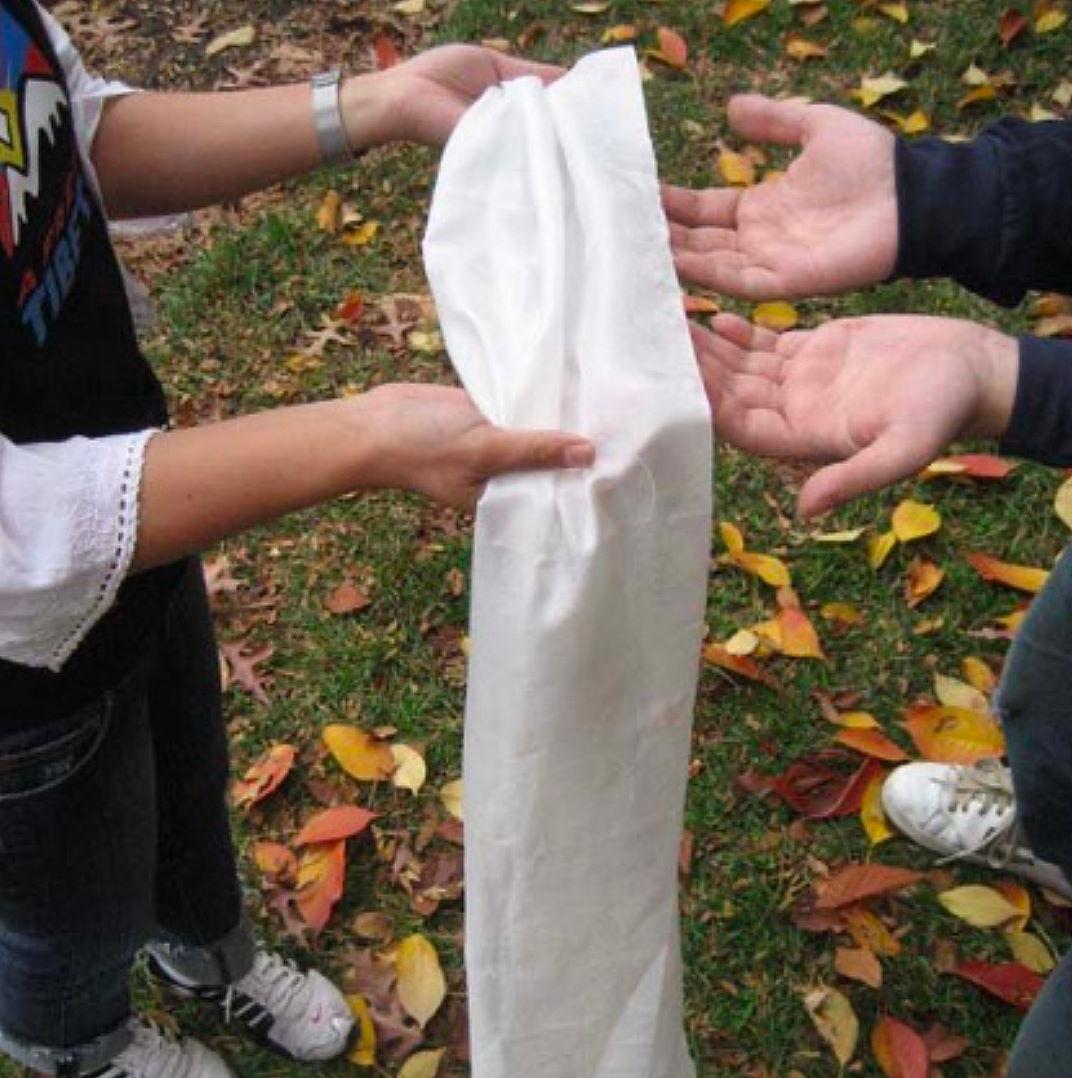Offering Scarves (offering of a Kata)
 The offering of a Kata is a well-known Tibetan custom. When offered in greeting, the Kata symbolizes the very best intentions and happiness of the giver. It is representative of the start of a good relationship. Our Katas are made of white silk and have the Eight Auspicious Symbols woven into them.
The offering of a Kata is a well-known Tibetan custom. When offered in greeting, the Kata symbolizes the very best intentions and happiness of the giver. It is representative of the start of a good relationship. Our Katas are made of white silk and have the Eight Auspicious Symbols woven into them.
To properly present a Kata, you first fold it in half lengthwise, representing interdependence. Then it should be offered with the open edges facing the person you are presenting the scarf to. This openness signifies an open heart with no negative motives in presenting the gift.
When presenting a Kata to an elder or honored monk, it is presented with a humble bow and your palms pressed together. In most cases, the Kata will be returned to you as a token of blessing. On some occasions the Kata is presented and not returned, such as birthdays and other special events personal to the receiver.
It is also a Tibetan custom to place katas on altars, statues, and certain pictures or paintings as a sign of respect.
White Katas are symbolic of peace, but there are other colors and meanings. A red Kata is a symbol of power, while a blue Kata symbolizes wisdom. Green and yellow Katas symbolize confidence and happiness, respectively.
When given as a farewell, the Kata symbolizes the wish for a safe journey and return.


